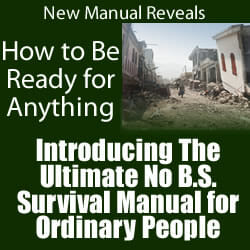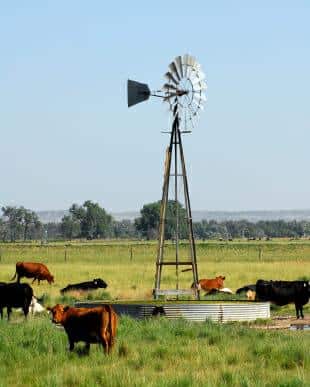There is a long list of non-lethal self-defense weapons available these days, and it is often difficult to know which one to choose. There are many different factors to take into consideration when trying to decide which one is just right for you. With the economic situation the way it is, cost is obviously a factor for many out there. Another factor may be convenience or even the amount of training required to use the weapon effectively. Through this article series, I will be focusing on a different non-lethal self-defense weapon and evaluating each of the factors mentioned plus many more. Each person is different with their preferences, and what is perfect for one person may not be the right fit for another. However, it’s important to know what options are available to you, and you might just be surprised by all that is out there.
Featured Weapon: The Yawara
In this article I will be focusing on the yawara. This non-lethal self-defense weapon is actually often overlooked as an option – not because it lacks effectiveness, but because so many people don’t even know it exists. The yawara is highly effective when you have received the proper training. It isn’t necessarily the flashiest self-defense weapon, but it can definitely get the job done and help protect you in your time of need.
The History of the Yawara
The yawara is also called a pasak or a dulodulo. It is a Japanese weapon used in various types of martial arts. The original concept of the yawara was that two pieces would be used together with the pair sticking out about an inch beyond each side of the hand when a fist was formed. It was popularized by Professor Frank A. Matsuyama in the 1940s when police officers of that time began to use the weapon. It was originally made out of wood, but now the modernized version comes in metal or even plastic.
Special Features of the Yawara
A Yawara is about four to six inches in length and not quite an inch wide. It can be hollow or solid, depending on the manufacturer. The idea is to be able to hide the stick in your hand when your fist is clenched. Doing this allows you to be able to strike quickly against the enemy without them knowing what has hit them – literally.
The target when using a yawara stick is the neck, throat, or temple. You could also aim for the eyes or the nose too. A great method of practicing is with a punching bag. You want to develop a good swing and improve your reflexes.
One of the best features of the yawara is that it can be easily concealed. This proves to be a huge advantage in a variety of situations. Many yawaras actually have a keychain attachment on the end, so that they can be attached to your keys for easy access.
The yawara stick is very inexpensive, especially when compared to other non-lethal self-defense weapons. One will run you anywhere from $10-$25, depending on where your purchase it from, and it is readily available in a variety of online stores.
Training Requirements of the Yawara
To maximize your ability to use the yawara effectively, you will need to obtain proper training. If you already have a martial arts background, these techniques should be easily mastered. Obviously it will take those without such a background a bit more time to get the hang of using this weapon.
As I mentioned above, I am not saying the yawara will be perfect for everyone; however, with its compact shape and inexpensive price, it may be an option you want to look into for your self-defense needs.
There is a long list of non-lethal self-defense weapons available these days, and it is often difficult to know which one to choose. There are many different factors to take into consideration when trying to decide which one is just right for you. With the economic situation the way it is, cost is obviously a factor for many out there. Another factor may be convenience or even the amount of training required to use the weapon effectively. Through this article series, I will be focusing on a different non-lethal self-defense weapon and evaluating each of the factors mentioned plus many more. Each person is different with their preferences, and what is perfect for one person may not be the right fit for another. However, it’s important to know what options are available to you, and you might just be surprised by all that is out there.
Featured Weapon: The Yawara
In this article I will be focusing on the yawara. This non-lethal self-defense weapon is actually often overlooked as an option – not because it lacks effectiveness, but because so many people don’t even know it exists. The yawara is highly effective when you have received the proper training. It isn’t necessarily the flashiest self-defense weapon, but it can definitely get the job done and help protect you in your time of need.
The History of the Yawara
The yawara is also called a pasak or a dulodulo. It is a Japanese weapon used in various types of martial arts. The original concept of the yawara was that two pieces would be used together with the pair sticking out about an inch beyond each side of the hand when a fist was formed. It was popularized by Professor Frank A. Matsuyama in the 1940s when police officers of that time began to use the weapon. It was originally made out of wood, but now the modernized version comes in metal or even plastic.
Special Features of the Yawara
A Yawara is about four to six inches in length and not quite an inch wide. It can be hollow or solid, depending on the manufacturer. The idea is to be able to hide the stick in your hand when your fist is clenched. Doing this allows you to be able to strike quickly against the enemy without them knowing what has hit them – literally.
The target when using a yawara stick is the neck, throat, or temple. You could also aim for the eyes or the nose too. A great method of practicing is with a punching bag. You want to develop a good swing and improve your reflexes.
One of the best features of the yawara is that it can be easily concealed. This proves to be a huge advantage in a variety of situations. Many yawaras actually have a keychain attachment on the end, so that they can be attached to your keys for easy access.
The Cost of the Yawara
The yawara stick is very inexpensive, especially when compared to other non-lethal self-defense weapons. One will run you
There is a long list of non-lethal self-defense weapons available these days, and it is often difficult to know which one to choose. There are many different factors to take into consideration when trying to decide which one is just right for you. With the economic situation the way it is, cost is obviously a factor for many out there. Another factor may be convenience or even the amount of training required to use the weapon effectively. Through this article series, I will be focusing on a different non-lethal self-defense weapon and evaluating each of the factors mentioned plus many more. Each person is different with their preferences, and what is perfect for one person may not be the right fit for another. However, it’s important to know what options are available to you, and you might just be surprised by all that is out there.
Featured Weapon: The Yawara
In this article I will be focusing on the yawara. This non-lethal self-defense weapon is actually often overlooked as an option – not because it lacks effectiveness, but because so many people don’t even know it exists. The yawara is highly effective when you have received the proper training. It isn’t necessarily the flashiest self-defense weapon, but it can definitely get the job done and help protect you in your time of need.
The History of the Yawara
The yawara is also called a pasak or a dulodulo. It is a Japanese weapon used in various types of martial arts. The original concept of the yawara was that two pieces would be used together with the pair sticking out about an inch beyond each side of the hand when a fist was formed. It was popularized by Professor Frank A. Matsuyama in the 1940s when police officers of that time began to use the weapon. It was originally made out of wood, but now the modernized version comes in metal or even plastic.
Special Features of the Yawara
A Yawara is about four to six inches in length and not quite an inch wide. It can be hollow or solid, depending on the manufacturer. The idea is to be able to hide the stick in your hand when your fist is clenched. Doing this allows you to be able to strike quickly against the enemy without them knowing what has hit them – literally.
The target when using a yawara stick is the neck, throat, or temple. You could also aim for the eyes or the nose too. A great method of practicing is with a punching bag. You want to develop a good swing and improve your reflexes.
One of the best features of the yawara is that it can be easily concealed. This proves to be a huge advantage in a variety of situations. Many yawaras actually have a keychain attachment on the end, so that they can be attached to your keys for easy access.
The Cost of the Yawara
The yawara stick is very inexpensive, especially when compared to other non-lethal self-defense weapons. One will run you anywhere from $10-$25, depending on where your purchase it from, and it is readily available in a variety of online stores.
Training Requirements of the Yawara
To maximize your ability to use the yawara effectively, you will need to obtain proper training. If you already have a martial arts background, these techniques should be easily mastered. Obviously it will take those without such a background a bit more time to get the hang of using this weapon.
As I mentioned above, I am not saying the yawara will be perfect for everyone; however, with its compact shape and inexpensive price, it may be an option you want to look into for your self-defense needs.
There is a long list of non-lethal self-defense weapons available these days, and it is often difficult to know which one to choose. There are many different factors to take into consideration when trying to decide which one is just right for you. With the economic situation the way it is, cost is obviously a factor for many out there. Another factor may be convenience or even the amount of training required to use the weapon effectively. Through this article series, I will be focusing on a different non-lethal self-defense weapon and evaluating each of the factors mentioned plus many more. Each person is different with their preferences, and what is perfect for one person may not be the right fit for another. However, it’s important to know what options are available to you, and you might just be surprised by all that is out there.
Featured Weapon: The Yawara
In this article I will be focusing on the yawara. This non-lethal self-defense weapon is actually often overlooked as an option – not because it lacks effectiveness, but because so many people don’t even know it exists. The yawara is highly effective when you have received the proper training. It isn’t necessarily the flashiest self-defense weapon, but it can definitely get the job done and help protect you in your time of need.
The History of the Yawara
The yawara is also called a pasak or a dulodulo. It is a Japanese weapon used in various types of martial arts. The original concept of the yawara was that two pieces would be used together with the pair sticking out about an inch beyond each side of the hand when a fist was formed. It was popularized by Professor Frank A. Matsuyama in the 1940s when police officers of that time began to use the weapon. It was originally made out of wood, but now the modernized version comes in metal or even plastic.
Special Features of the Yawara
A Yawara is about four to six inches in length and not quite an inch wide. It can be hollow or solid, depending on the manufacturer. The idea is to be able to hide the stick in your hand when your fist is clenched. Doing this allows you to be able to strike quickly against the enemy without them knowing what has hit them – literally.
The target when using a yawara stick is the neck, throat, or temple. You could also aim for the eyes or the nose too. A great method of practicing is with a punching bag. You want to develop a good swing and improve your reflexes.
One of the best features of the yawara is that it can be easily concealed. This proves to be a huge advantage in a variety of situations. Many yawaras actually have a keychain attachment on the end, so that they can be attached to your keys for easy access.
The Cost of the Yawara
The yawara stick is very inexpensive, especially when compared to other non-lethal self-defense weapons. One will run you anywhere from $10-$25, depending on where your purchase it from, and it is readily available in a variety of online stores.
Training Requirements of the Yawara
To maximize your ability to use the yawara effectively, you will need to obtain proper training. If you already have a martial arts background, these techniques should be easily mastered. Obviously it will take those without such a background a bit more time to get the hang of using this weapon.
As I mentioned above, I am not saying the yawara will be perfect for everyone; however, with its compact shape and inexpensive price, it may be an option you want to look into for your self-defense needs.
anywhere from $10-$25, depending on where your purchase it from, and it is readily available in a variety of online stores.
Training Requirements of the Yawara
To maximize your ability to use the yawara effectively, you will need to obtain proper training. If you already have a martial arts background, these techniques should be easily mastered. Obviously it will take those without such a background a bit more time to get the hang of using this weapon.
As I mentioned above, I am not saying the yawara will be perfect for everyone; however, with its compact shape and inexpensive price, it may be an option you want to look into for your self-defense needs.











